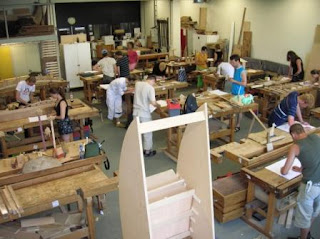Vocational
Education and Training
At
present, Vocational Education is provided only at
the +2
stage and, even here, it is restricted to a distinct
stream
that is parallel to the academic stream. In
contrast
to the NPE 1986 goal of covering 25 per cent
of the +2
enrolment in the vocational stream by the
year 2000,
less than 5 per cent of students choose this
option at
present. The programme has been debilitated
by a range
of conceptual, managerial and resource
constraints
for more than 25 years. Apart from being
viewed as
an inferior stream, it suffers from poor
infrastructure,
obsolete equipment, untrained or underqualified
teachers
(often on a part-time basis), outdated
and
inflexible courses, lac k of vertical or later al mobility,
absence of
linkage with the ‘world of work’, lack of a
credible
evaluation, accreditation and apprenticeship
system,
and, finally, low employability (Report of the
Working
Group for the Revision of the Centrally
Sponsored
Scheme of Vocationalisation of Secondary
Education,
NCERT, 1998)




